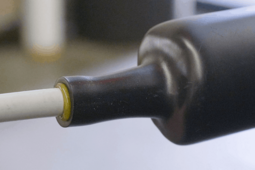electricthot
New Member
- Joined
- Aug 17, 2022
- Messages
- 31
My battery (Renogy 12v 100Ah AGM) manufacturer recommends up to four batteries paralleled in a battery bank. I need 800Ah capacity. What is a simple solution here?
I take all my batteries to a central point (bus bar style) with same length cables, both positive and negative, and feed my loads from there. Does this eliminate the need for a battery balancer?Pick up a good quality bus bar and you can either hookup the batteries individually to it with same length cables or in series of two connected in parallel with each other and than wire to bus bar on opposing battery terminals.
I need lighter batteries. And cheaper to replace.Simple solution is to get the big 400Ah batteries and parallel those. Easier to connect up and keep 2 batteries balanced than it is to find room and cableage and all for 8 batteries.
The need and use of an active battery balancer is more often for individuals cells wired in series versus parallel batteries. But my knowledge on whether it would be a good, or needed thing, to use for your stated purpose is non existent. Perhaps someone else can answer.... Does this eliminate the need for a battery balancer?
You plan 10 kWh AGM battery?My battery (Renogy 12v 100Ah AGM)
You are right. A balancer does not make any sence to add to batteries in parallel.The need and use of an active battery balancer is more often for individuals cells wired in series versus parallel batteries. But my knowledge on whether it would be a good, or needed thing, to use for your stated purpose is non existent. Perhaps someone else can answer.
In that case, bus bars and equal length wires and you should be fine.I need lighter batteries. And cheaper to replace.
Here's my solution: The understanding I can gain from this device I put together will let me make comparisons that will answer my questions.My battery (Renogy 12v 100Ah AGM) manufacturer recommends up to four batteries paralleled in a battery bank. I need 800Ah capacity. What is a simple solution here?
I use liquid electrical tape where needed. I use lugs everywhere, and just hammer them flat. I keep various sizes of copper tubing on hand to make my own lugs/connecters. I buy only welding cable, and nothing smaller than 6ga.I would suggest if you are going to install large battery banks that you pickup some tools to put on proper terminals for all your wires. Various crimpers, heat gun and and heat shrink tubing makes a better installation. Do not forget proper wire sizing.
Your choice. May cause problems with unequal resistance.I use liquid electrical tape where needed. I use lugs everywhere, and just hammer them flat. I keep various sizes of copper tubing on hand to make my own lugs/connecters.
Every unsoldered connection anywhere near my batteries gets regularly brushed with WD40. That enhances conductance, and prevents corrosion.Your choice. May cause problems with unequal resistance.
All of my battery connections are well crimped and sealed with heat shrink, and don't really need any additional maintenance or special voodoo sauce to keep them working.Every unsoldered connection anywhere near my batteries gets regularly brushed with WD40. That enhances conductance, and prevents corrosion.
You plan 10 kWh AGM battery?
Do you took time to look at lifepo4 batteries price?
You can be surprise to realize that lifepo4 can be cheaper / kWh (usable).
Over the lifetime, of course.3.8x cheaper over their lifetime by my napkin calculations.
Far cheaper (which is why practically all offgrid installs here in Aust (apart from some 'diy' homebrews lol) use LFP (or LYP for those in the hotter regions here)Over the lifetime, of course.
My point was they can be cheaper day one considering usable energy of lead is around 50% if you want to have more than 100 cycles of life.
Compare to LFP who are rated for thousand cycle of life 100-0%.
So, 100Ah LFP = 200Ah lead day one.
I prefer to let know people why to stop spend on crappy lead battery.
Heat shrink is inferior to liquid electrical tape. Heat shrink isn't waterproof. And connections can corrode under heat shrink.All of my battery connections are well crimped and sealed with heat shrink, and don't really need any additional maintenance or special voodoo sauce to keep them working.
There are heatshrinks available for use with waterproofing compound inside (in fact they are rated for use completely underwater, and in explosive gas environments like coal mines lol)Heat shrink is inferior to liquid electrical tape. Heat shrink isn't waterproof.



